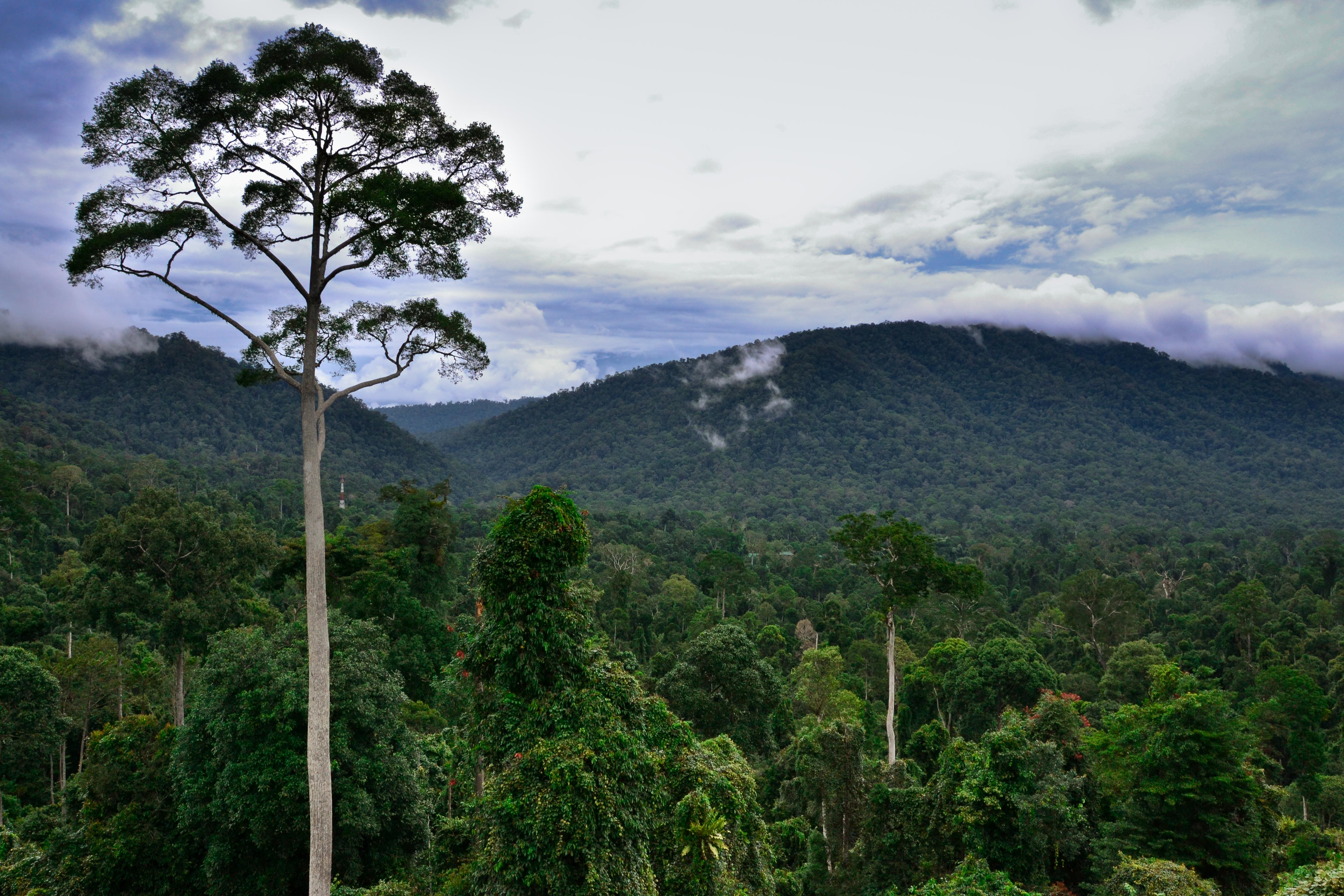
Introducing BorneoCam: Journey Into the Heart of the Rainforest
Author: Chloe Written: 2018-06-21
Our latest Instant Wild project will take you on a journey into the Heart of Borneo - one of the oldest rainforests on the planet. Conservation Scientists need your help to understand how citizen science can be used as a tool to understand the impact of habitat loss and degradation on species in Borneo. By better understanding this, they will be able to monitor and manage wildlife much more effectively across Borneo and the rest of Southeast Asia.
Along the way you might encounter the orangutans, elephants, bears and clouded leopards that call this hotspot of diversity their home. You may also come across a whole host of less well known species, including treeshrews, bearcats and beautiful pheasants!
This project is being carried out by scientists at ZSL's Institute of Zoology and uses images from non-live camera traps. There are approximately 35,000 images for you to identify in total, which will be uploaded in small batches each weekday. Lead scientist on the project, Ollie Wearn, says “The wildlife in Borneo is facing many challenges, but there is hope. We now know for example that many of Borneo’s iconic species can persist in the vast areas used for timber extraction, at least in the short term. We now need to establish long-term monitoring of these critical populations, and camera traps are just the right tools for the job. Citizen scientists could play a key role in this, to help process the huge numbers of images involved, but we need to understand the opportunities and limitations of this”. This is where you come in! Every image you identify will help the project succeed!
Some of the species that you may see are very similar to each other, so we have included more information than usual in the Field Guides to help you. Some of the trickier ones include:
Muntjac species
There are two muntjac species: Red and Yellow. They are quite similar at first glance, but pay attention to a few key characters and you should quickly become an expert in telling them apart!
Red Muntjac are reddish-brown in colour, with a dark brown face and dark lower limbs. Yellow Muntjac, on the other hand, have a lighter, more yellowish coat, which is darker along the middle of the back. Yellow Muntjac also have a dark “cap” of fur (on their forehead and top of head), in stark contrast to the pale patch on the Red Muntjac and do not have dark legs. Males in both species have short antlers (females in both species lack antlers), but the form of the antlers is a bit different. Red Muntjac males have antlers projecting from long pedicels (the bony projections which antlers grow from), whilst Yellow Muntjac males have shorter, more slender pedicels, usually with short, stubby antlers projecting from them.
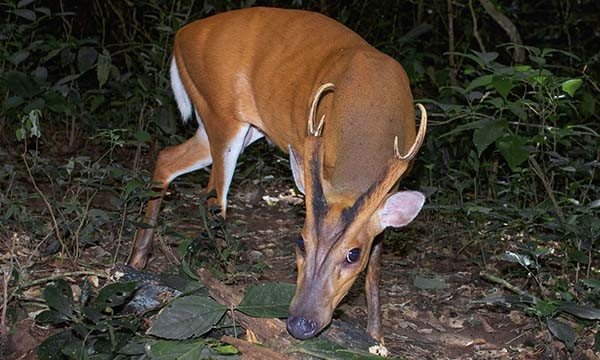
Red Muntjac (male).
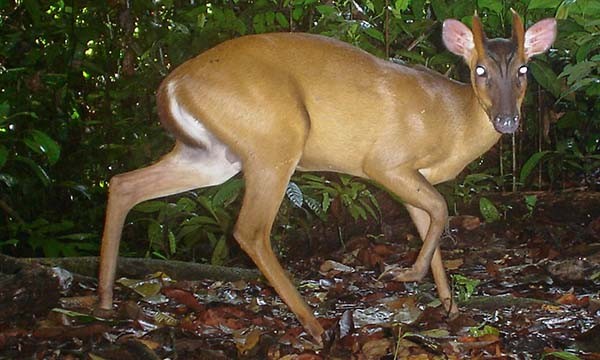
Yellow Muntjac (male). Note the black cap!
Interesting fact: Muntjacs use secretions from pre-orbital glands to communicate reproductive state, territorial boundaries, and to cement social bonds. If you’re lucky, you might just see a muntjac rubbing its face on the ground to distribute these glandular secretions!
Treeshrews...
…Don’t live in trees and are not actually a type of shrew. They form an entire order of mammals all on their own: the Scandentia.
There are as many as four treeshrew species you should look out for. They can be difficult to identify at first, but don’t worry, just give it your best shot! You can tell them apart by looking at their colouration and the presence/absence of stripes. Firstly there are two species with stripes, which run along along their spine. These are the striped treeshrew (obviously) and the large treeshrew. You can tell these two apart because the stripe in the striped treeshrew is visible along the entire length of the back, whereas the stripe in the large treeshrew disappears into a dark brown patch of fur on the lower back. The tail of the large treeshrew is also relatively short and bushy, and it has a bit longer snout than the striped treeshrew.

Striped Treeshrew. Note the stripe running along the length of the back.
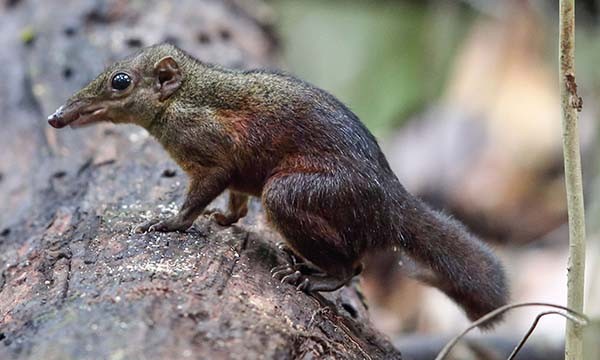
Large Treeshrew. Note that the stripe does NOT run along the length of the back, and the tail is relatively short and bushy.
The other two species don’t have stripes along their back. These two are the plain treeshrew and the slender treeshrew, and they differ in their colouration and in their overall size (which can be difficult to judge at first). The plain treeshrew is reddish-brown, whilst the slender treeshrew is more olive-brown in colouration. The plain treeshrew is also larger and more robust than the slender treeshrew.
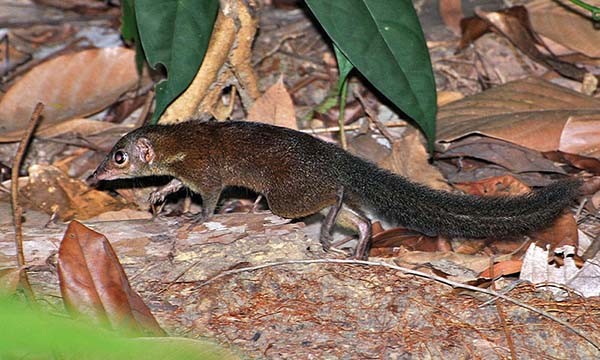
Plain Treeshrew. Note the reddish-brown colouration.
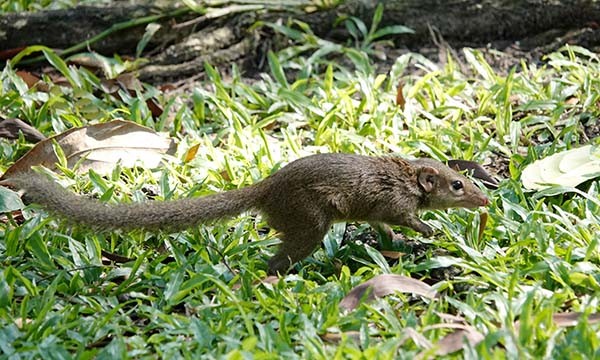
Slender Treeshrew. Note the olive colouration and slender body.
Treeshrews might also be confused with squirrels, but treeshrews have long faces and longer, thinner tails compared to squirrels.
Mongooses
There are two mongoose species. Colouration in both species is highly variable, so it’s best to focus on two other key characters: the length of the tail and the presence/absence of stripes below the ears. In the Short-tailed Mongoose, the tail is approximately half the length of the rest of the body, whilst in the Collared Mongoose it is a bit longer than this. The Collared Mongoose also has a distinctive pale neck stripe below the ears, which the Short-tailed Mongoose lacks, and the neck is usually paler than the rest of the body.
Mousedeer
Mouse-deer are among the smallest hoofed animals on the planet, being approximately the size of a rabbit, and there are two species to look out for in Borneo – the Lesser Mouse-deer and the Greater Mouse-deer. The Lesser Mouse-deer is (unsurprisingly) smaller and more slender than the Greater, and it has a dark patch of fur along the back of its neck. The coat of the Lesser also tends to be lighter in colour than the Greater, and more uniform in colour (lacking the obvious striations seen in the Greater). Both species have a brown-and-white striped pattern on the throat. However, when viewed from the side, the first white stripe on the throat is broken by a patch of dark fur in the Greater Mouse-deer, but is unbroken in the Lesser.
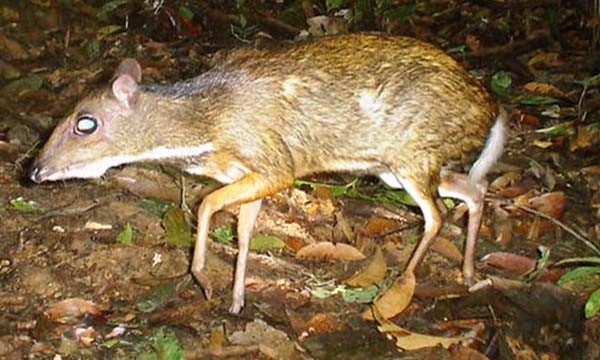
Lesser Mouse-deer. Note the dark patch of fur on the back of the neck.
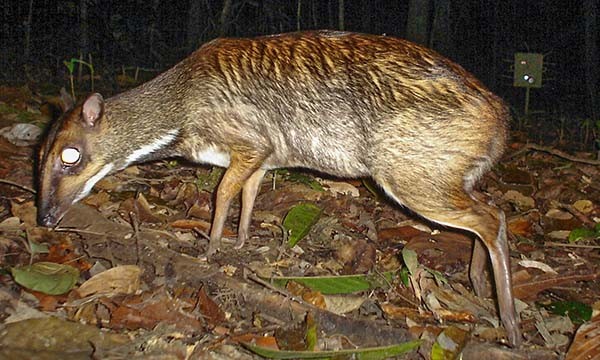
Greater Mouse-deer. Note the striations on the flanks and the broken white line on the neck.
Mouse-deer are neither part mouse nor part deer! Mouse-deer are actually a type of chevrotrain (in the family Tragulidae) and are only distantly related to true deer (Cervidae). This species has been known to jump into rivers to escape predators and can stay underwater for up to 5 minutes at a time!

